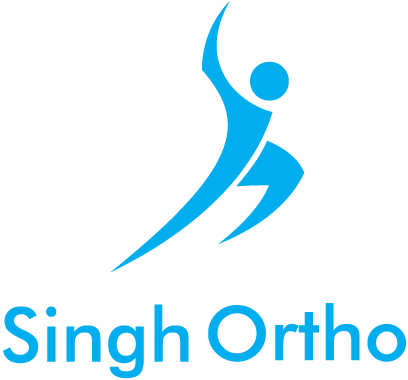What Is Greater Trochanteric Pain Syndrome (GTPS)?
GTPS, also called trochanteric bursitis, is a localised painful condition affecting your outer thigh and hip area where the pain is typically confined to only the outer side of the femur at the edge of the hip.
The trochanter is a bony prominence (projection or protuberance) of the thighbone (femur) near its joint with the hip bone. It serves as a site for muscle attachment.
Anatomically, your femur has two trochanters:
- Greater trochanter – The outside ball at the top of the femur. This is also called the major or outer trochanter
- Lesser trochanter – The inside knob at the top of the femur
These trochanters together act as a point where the hip and thigh muscles attach.
Risk Factors of GTPS
You are likely to be affected by GTPS if you:
- Are of middle-to-old age (especially a woman)
- Are obese and have a history of hip surgery
- Have hip arthritis, spine problems or chronic low-back pain
- Have leg-length discrepancy and thyroid disease
Causes of GTPS
There are several reasons you may suffer from GTPS. They include:
- Inflammation of the bursa (a fluid-filled sac) on the outer edge of your hip
- Inflamed tendons, muscles, or other structures surrounding the greater trochanter
- Acute trauma or infection of the trochanteric bursa or overuse due to repetitive activity
- Prolonged lying on one side
- Ripped tendon or bone spurs in the hip or thighbone
- Medical conditions such as tendinitis, muscle tears or iliotibial band disorders (ITB)
Symptoms
Common symptoms of GTPS can be:
- Chronic pain or soreness in the outer or lateral part of the hip
- Feeling of tenderness when in the side-lying position
- Pain over the outside of the thigh or buttock muscle
- Swelling and pain in the leg affected by GTPS
- Numbness in the upper thigh of your affected leg
- Sleep disturbance when lying on the affected side
- Tenderness on palpation over the greater trochanter area
Complications of GTPS
Major complications of GTPS include:
- Chronic pain that affects your daily activities
- Reduced movement in your hip
- Disability (rare)
Diagnosis
Any of the following tests can be used to diagnose the condition:
- Single-leg stance or straight-leg raise test
- Resisted internal rotation or active abduction test
- Point tenderness at greater trochanter test
- Patrick’s or FABER test (a series of pain provocation tests)
- Ultrasound or MRI test and/or X-ray
Treatment
Avoiding the activities that caused GTPS and giving your hip adequate rest and time to heal can be the first and foremost treatment. Additionally, the doctor may recommend:
- Nonsteroidal anti-inflammatory drugs (NSAIDs) or steroid injections
- Physical therapy including exercises, massage, ultrasound, ice or heat
- Assistive support devices such as a cane or crutches
- Specific and goal-directed rehabilitation programmes
If the above treatments prove unsuccessful, laparoscopic surgery can be recommended.
After the surgery you are advised to:
- Avoid falls and repetitive activities like jogging and stair climbing
- Lose weight (if overweight) to relieve pressure on the joints
Certain preventive exercises are also prescribed to strengthen the thighs and to stabilise the hip joint. All of these are aimed at preventing further injury to you after GTPS surgery.
Recovery from GTPS
Recovery from surgery may take a few weeks to months with successful rehabilitation. Once recovered, you will have a pain-free hip with normal flexibility, strength and functional mobility.










